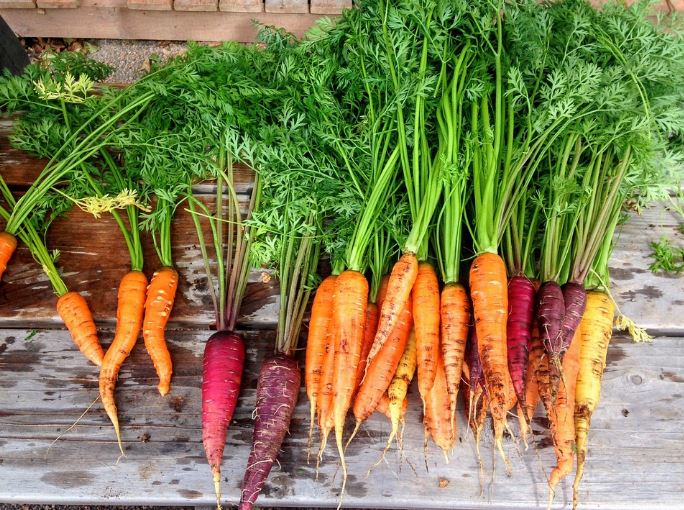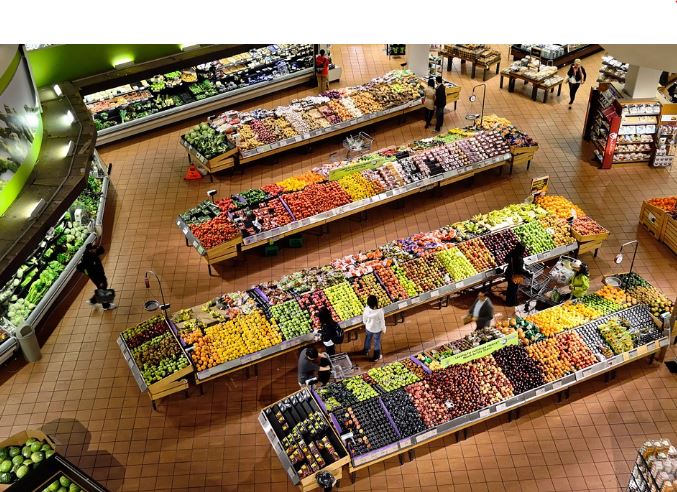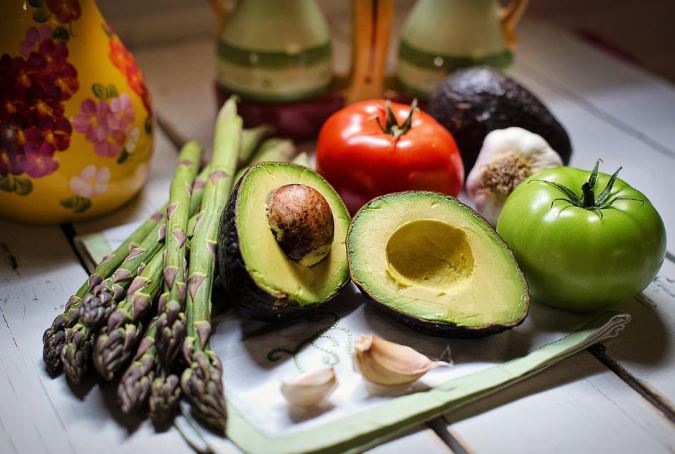List of 100+ Vegetables in German
Let us start off in the absolute beginning. Close your eyes… You are a baby…. What are the first few words that you speak? You start saying words you like which are basically all the food pieces that you eat. And babies are fed all the vegetables. This is true for a German speaking child as well. For the German child, it formulates nothing but the absolute basics of List of Vegetables in German including the Parts of the room in German.

Now let us skip ahead and go to school… I’m sure in school, we would have learnt about the vocabulary list of Vegetables. Now what about a child studying in German? Would it not be the case that they learn about the list of Vegetables in German and the list of beans in German?
One of the “most” common topics in German A1 is learning the vocabulary for how to describe what one ate and this always involves fruits and vegetables. We have already covered list of fruits, berries and nuts in another post. In this post, we will be learning about a comprehensive list of vegetables in German with tons and tons of examples
Topics:
- How to say Vegetables in German?
- Complete List of Vegetables in German?
- Common supermarket vegetables in German
- Beans and lentils in German?
- Leafy vegetables in German?
- Parts of a plant in German?
How do you say “Vegetable” in German?
- SINGULAR: The German translation for “The vegetable” is “das Gemüse”
- EXAMPLE: “Potato is a vegetable.” à Kartoffel ist ein Gemüse.
- PLURAL: The German word for “The Vegetables” is “das Gemüse” (the same… THANKFULLY!!!!)
- EXAMPLE: “I like vegetables.” à ich mag Gemüse.
Root Vegetables in German
Who doesn’t like a nice potato or an onion based dish. If you ask me (a true potato lover that I am) it’s nigh impossible for me to cook without either of the two. Literally speaking, potatoes are like a lifeline to me. Similarly we have a ton of root based vegetables which needs to be memorized in your quest to master the list of German Vegetables.

These are the common root based Vegetables that are found in any German supermarket and thus form an important part of the list of German vegetables. You can now learn the German vocabulary for the list of root based vegetables in German.
| English | German Vegetables | English Sentence | Deutsche Satz |
| Potato | Die Kartoffel / die Kartoffeln | Germans love potatoes | Die Deutschen lieben Kartoffeln |
| Carrot | Die Karotte / die Karotten | Carrots are very cheap | Karotten sind sehr billig |
| Sweet Potato | Die Süßkartoffel / die Süßkartoffeln | Sweet potatoes are very heavy. | Süßkartoffeln sind sehr schwer. |
| Onion | Die Zwiebel / die Zwiebeln | Do you like onions? | Magst du Zwiebeln? |
| Leek | Der Lauch / der Lauch | Where do I buy a leek? | Wo kaufe ich Lauch? |
| Garlic | Der Knoblauch | Garlic has a strong flavour. | Knoblauch hat einen starken Geschmack. |
| Turnip | Die Rübe / die Rüben | My least favourite vegetable is the Turnip. | Mein unbeliebtestes Gemüse ist die Rübe. |
| Radish | Der Rettich / die Radieschen | Red Radishes are quite tasty | Rote Radieschen sind sehr lecker |
| Ginger | Der Ingwer | There is a bottle of Ginger paste in the fridge. | Im Kühlschrank steht eine Flasche Ingwerpaste. |
| Beetroot | Die Rote Bete | Can you peel the beetroot? | Kann man die Rote Beete schälen? |
Common Vegetables in German
Ok, lets do a bit of role play…. You are in Germany…. You’re in a supermarket trying to pick up some local variety of vegetables to cook and eat. How do you know which ones you need and which ones you don’t? You need to know the List of Vegetables in German and the list of lentils and beans in German.

Now that you have memorized the long list of German root vegetables, let’s dive into the most common German vegetables that you can see in German supermarkets and consumed by most German households.
| English | German Vegetables | English Sentence | Deutsche Satz |
| Aubergine | die Aubergine | You know that I hate aubergine! | Du weißt, dass ich Auberginen hasse! |
| Bell Peppers / Capsicum | die Paprika | Bell peppers stuffed with potatoes are delicious. | Mit Kartoffeln gefüllte Paprika sind köstlich. |
| Zucchini | die Zucchini | My baby likes to play with the Zucchini. | Mein Baby spielt gerne mit Zucchini. |
| Tomato | die Tomate | Tomatoes are red. | Tomaten sind rot. |
| Cauliflower | der Blumenkohl | That is a very large Cauliflower. | Das ist ein sehr großer Blumenkohl. |
| Peas | die Erbsen | You can buy frozen peas in any supermarket. | Gefrorene Erbsen kannst du in jedem Supermarkt kaufen. |
| French Beans | die Buschbohnen | The French beans are rotten. | Die Buschbohnen sind faul. |
| Chilli Peppers | die Chilischoten | Please do not add chilli peppers to the burgers. | Bitte fügen Sie den Burgern keine Chilis hinzu. |
| Cucumber | die Gurke | Buy two bottles of Pickled Cucumbers. | Kaufe zwei Flaschen eingelegte Gurken. |
| Corn | Der Mais | Crows love corn. | Krähen lieben Mais. |
| Avocadoes | die Avocado | Avocadoes are quite healthy. | Avocados sind ziemlich gesund. |
| Mushrooms | die Pilze | You can find over 10 varieties of Mushroom in Germany. | In Deutschland gibt es über 10 Pilzsorten. |
| Olives | die Oliven | German Olives are the best olives in the world. | Deutsche Oliven sind die besten Oliven der Welt. |
| Pumpkins | die Kürbisse | The largest Pumpkin weighs over 500 kg. | Der größte Kürbis wiegt über 500 kg. |
| Lemons | die Zitronen | Can I have some lemon juice? | Kann ich etwas Zitronensaft haben? |
| Brussels Sprouts | der Rosenkohl | Please don’t buy Brussels Sprouts for Christmas. | Bitte kaufen Sie keinen Rosenkohl zu Weihnachten. |
| Squash | der Kürbis | That squash is very heavy. | Dieser Kürbis ist sehr schwer. |
Beans and lentils in German
WHOOOHOOO!! You have now memorized the long list of root vegetables in German and the even longer list of common German vegetables. Step 2 of memorizing the list of Vegetables in German is now complete….

Step three will be to memorize the most common list of beans and lentils in German. I understand that lentils and beans strictly don’t fall into the category of list of vegetables in German, buy hey, can you live without them? A ton of German dishes incorporate beans and lentils and you really cannot avoid them. They are common in Indian cuisine, African cuisine, and Chinese cuisine and also in South Asian cuisine.
Thus, lentils and beans are quite common in European cuisine and in fact all over the world. So let’s get digging into the list of beans and lentils in German, a sub part of the list of Vegetables in German and the list of beans in German!!
| English | German Vegetables | English Sentence | Deutsche Satz |
| Soya Beans | Die Sojabohnen | You can make tasty burger patties with Soya Beans | Mit Sojabohnen können Sie leckere Burger-Patties zubereiten |
| Lentils | Die Linsen | Did you know that Lentils are rich in protein? | Wussten Sie, dass Linsen reich an Eiweiß sind? |
| Lima beans | Die Limabohnen | Lima beans are quite expensive. | Limabohnen sind ziemlich teuer. |
| Mung beans | Die Mungobohnen | The Indian man likes mung beans. | Der Inder mag Mungobohnen. |
| Kidney beans | Die Kidneybohnen | The Mexican man likes kidney beans in his taco. | Der Mexikaner mag Kidneybohnen in seinem Taco. |
| Black beans | Die schwarzen Bohnen | The black beans are tastier than kidney beans. | Die schwarzen Bohnen sind schmackhafter als Kidneybohnen. |
| Legumes | Die Hülsenfrüchte | Legumes are healthy. | Hülsenfrüchte sind gesund. |
| Sprouts | Die Sprossen | If you need to lose weight, eat Sprouts every day. | Wenn Sie abnehmen müssen, essen Sie jeden Tag Sprossen. |
| Chickpeas | Die Kichererbsen | We have a farm and we grow Chickpeas. | Wir haben eine Farm und bauen Kichererbsen an. |
| Black-eyed peas | Die Schwarzäugige Erbsen | Can you buy one kilo of Black-eyed peas? | Kann man ein Kilo Schwarzäugige Erbsen kaufen? |
| Peanuts | Die Erdnüsse | Peanuts are common in Chinese cuisine. | Erdnüsse sind in der chinesischen Küche weit verbreitet. |
Leafy vegetables in German
Any dish that you order in Germany will offer you a side of salad. Even a burger will have a leaf of lettuce. You can find hundreds of types of salads across the world. The interesting thing about salad is that you may like one salad leaf and hate another? How do you know which one to ask and which one to not add?
You have to memorize, along with the list of vegetables in German, the German vocabulary list for the different types of German vegetables which can be used for salads.

| English | German Vegetables | English Sentence | Deutsche Satz |
| Asparagus | Der Spargel | I like Asparagus soup. | Ich mag Spargelsuppe. |
| Cabbage | Der Kohl | Rabbits love cabbage leaves. | Kaninchen lieben Kohlblätter. |
| Iceberg Lettuce | Der Eisbergsalat | An Iceberg Lettuce can weigh over a kilo. | Ein Eisbergsalat kann über ein Kilo wiegen. |
| Spinach | Der Spinat | Can you add some spinach in the salad? | Kannst du etwas Spinat in den Salat geben? |
| Celery | Der Sellerie | Celery is the most important ingredient in a salad. | Sellerie ist die wichtigste Zutat in einem Salat. |
| Broccoli | Der Brokkoli | Broccoli needs to be boiled. | Brokkoli muss gekocht werden. |
| Salad leaves | Der Salatblätter | I usually throw away the salad leaves. | Normalerweise werfe ich die Salatblätter weg. |
| Butterhead Lettuce | Der Kopfsalat | The Butterhead Lettuce is the most common type of lettuce in Europe. | Der Kopfsalat ist die häufigste Salatart in Europa. |
Parts of a plant in German
I know that this topic is not included into the list of Vegetables in German. Also this is a topic which we have covered as a part of another blog (in the list of fruits in German). However I could not resist including this topic once again since this is one which is super important and highly ignored!!
Do learn and memorize the German vocabulary master word list for the different parts of a plant in German along with your List of Vegetables in German and the list of beans in German.

| English | German Vegetables | English Sentence | Deutsche Satz |
| Leaf | das Blatt | The leaf is very big and red. | Das Blatt ist sehr groß und rot. |
| Leaves | die Blätter | The yellow Leaf and the green Leaves | Das gelbe Blatt und die grünen Blätter |
| Branch | der Ast | The dog likes the big branch. | Der Hund mag den großen Ast. |
| Branches | die Äste | There are many branches and leaves | Es gibt viele Äste und Blätter |
| Tree | der Baum | The tree is huge | Der Baum ist riesig |
| Trees | Die Bäume | The mango trees in India are large. | Die Mangobäume in Indien sind groß. |
| Root | die Wurzel | The root is deep and powerful. | Die Wurzel ist tief und kraftvoll. |
| Roots | die Wurzeln | The coconut tree has strong roots. | Die Kokospalme hat starke Wurzeln |
| Flower | Die Blume | The violet flower is poisonous. | Die violette Blume ist giftig. |
| Flowers | Die Blumen | The flowers are pretty | Die Blumen sind hübsch |
| Tree Bark | die Baumrinde | The tree bark is tasty. | Die Baumrinde ist lecker. |
| tree trunk | der Stamm | The tree trunk is used to make chairs and tables. | Aus dem Baumstamm werden Stühle und Tische hergestellt. |
| fruit | die Frucht | We should have fruit juice with breakfast | Wir sollten Fruchtsaft zum Frühstück haben |
| Vegetable | Das Gemüse | All animals like to eat vegetables. | Alle Tiere fressen gerne Gemüse. |



[…] 100+ List of Vegetables in German […]